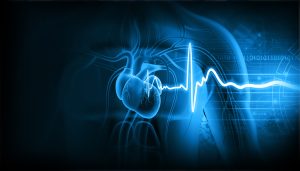Articles / Obstructive sleep apnoea often missed in women


writer
Sleep and Respiratory Specialist; Medical Director, Sleep Services Australia
0 hours
These are activities that expand general practice knowledge, skills and attitudes, related to your scope of practice.
0.5 hours
These are activities that require reflection on feedback about your work.
0 hours
These are activities that use your work data to ensure quality results.
These are activities that expand general practice knowledge, skills and attitudes, related to your scope of practice.
These are activities that require reflection on feedback about your work.
These are activities that use your work data to ensure quality results.
Women with obstructive sleep apnoea present differently to men, and they tend to be diagnosed later, often at higher BMI levels – and they have more impaired quality of life than their male counterparts, explains sleep and respiratory physician Dr Linda Schachter, medical director at Sleep Services Australia.
The classical symptoms of sleep apnoea: snoring, witnessed apnoeas, waking, choking, waking tired, are in fact the classical symptoms in men, Dr Schachter says.
Women more commonly present with being tired, poor sleep quality and insomnia, as well as depressive symptoms, mood disturbances, frequent awakenings and nightmares.
They still can have snoring, witnessed apnoeas, and choking episodes, she adds. “I always joke that they’re not picked up because the husband is asleep, so they don’t actually notice it, whereas the wife tends to notice the husband stopping breathing.”
Witnessed apnoeas are more common in men, while snoring occurs at a similar prevalence in men and women, she notes.
“But tiredness, headaches, nightmares, bad mood in the morning, memory loss, attention problems, nocturia, and nocturnal awakenings are all more common in women with sleep apnoea, even though they aren’t considered the classical symptoms,” Dr Schachter says.
Sleep apnoea tends to progress gradually over years rather than months, and while people might notice their sleep quality slowly declining, or feel more tired during the day, they can often find plausible reasons for this, Dr Schachter points out.
“We’re very good at justifying why we’re tired. We work too hard, we’ve got young kids, and elderly parents and we justify our tiredness rather than thinking maybe there’s a problem with our sleep,” she says.
Risk of sleep apnoea increases in perimenopause and post-menopause, independent of age or BMI. Oestrogen and progesterone are important for maintaining sleep quality and upper airway patency. As these hormones decline during perimenopause and menopause, women have increased risk of upper airway collapse during sleep.
Unfortunately, most trials on sleep apnoea have been done in men, and most screening questionnaires have been tested on male participants, so it’s little wonder that diagnostic criteria and screening tools don’t adequately reflect the female experience.
The STOP-Bang questionnaire for sleep apnoea actually asks, ‘are you male’ and has greater sensitivity and predictive value in males than females, Dr Schachter says.
Similarly, while the Epworth Sleepiness Scale is useful, it may not capture the fatigue and mood symptoms that women predominantly experience.
There are four levels of sleep assessments.
Level 1: Inpatient sleep studies are level 1, but people tend to sleep more poorly in hospital.
Level 2: Home sleep studies are level 2. Full sleep studies at home provide comprehensive data while allowing patients to sleep in their familiar environment.
Level 3 and 4: Modified portable sleep apnoea testing are level 3, while continuous single or dual bioparameter recordings are level 4. These respiratory-only studies can rule in sleep apnoea, but may miss milder cases that are significant in women.
Women often require treatment at a lower Apnoea Hypopnea Index (AHI) than would traditionally be considered significant. AHI is the average number of breathing events per hour of sleep. Traditionally, less than five breathing events per hour of sleep is considered normal. Five to 15 is considered mild sleep apnoea, 15 to 30 is moderate sleep apnoea and over 30 respiratory events per hour of sleep would be severe sleep apnoea.
However, women are more symptomatic at a lower Apnoea Hypopnea Index (AHI).
“Their events, their apnoeas or hypopneas are a bit shorter. The oxygen desaturations are a bit less, and there’s more clustering around REM sleep, but they are more symptomatic,” Dr Schachter says.
A patient with an AHI of 5 (technically borderline normal) may experience substantial symptom improvement with CPAP therapy if they’re highly symptomatic. For that reason, clinical presentation should guide treatment decisions.
“So it is important that we look beyond AHI, particularly for women. And we probably need to look at the degree of oxygen desaturation, whether they’re snoring, the number of arousals, sleep quality, symptoms, and complications of sleep apnoea as well.”
Treatment aims to eliminate symptoms, improve quality of life and reduce or prevent complications.
“In one of our trials, we showed that people with severe sleep apnoea have a quality of life equivalent to somebody who’s got cancer.”
One recent study suggests that women may require lower CPAP pressures than men to maintain upper airway patency. Additionally, women may be more sensitive to mask comfort and machine noise, requiring careful attention to equipment selection and fitting.
Weight reduction is important, with the greatest improvements typically seen in the first 10 kilograms of weight loss. However, it’s unlikely that weight loss alone will completely resolve sleep apnoea, and patients should be advised that ongoing monitoring and treatment may be necessary despite successful weight management.
Recent weight loss medications have shown promise in improving sleep apnoea parameters, though again, complete resolution is rare. The method of weight loss appears less important than the actual weight reduction achieved.
Given that menopausal sleep problems are multifactorial, successful treatment often requires addressing multiple issues simultaneously. This includes:
Sleep apnoea treatment: CPAP, mandibular advancement devices, or other appropriate therapies
Insomnia management: Sleep hygiene education, and cognitive behavioural therapy for insomnia
Hormonal considerations: Discuss hormone replacement therapy where appropriate
Lifestyle modifications: Weight management, exercise, alcohol reduction
Managing comorbidities: Treat depression, anxiety, and/or other contributing conditions.
Practical recommendations for GPs:
Assessment
Referral
Follow-up
Based on this educational activity, complete these learning modules to gain additional CPD.

Allergen Introduction – Practical Tips for GPs

Oral Contraception Update

What do we do With High Triglycerides?

An Update on Heart Failure in Primary Care

writer
Sleep and Respiratory Specialist; Medical Director, Sleep Services Australia

Very overestimated
Moderately/slightly overestimated
Quite accurate
Moderately/slightly underestimated
Very underestimated
Listen to expert interviews.
Click to open in a new tab
Browse the latest articles from Healthed.
Once you confirm you’ve read this article you can complete a Patient Case Review to earn 0.5 hours CPD in the Reviewing Performance (RP) category.
Select ‘Confirm & learn‘ when you have read this article in its entirety and you will be taken to begin your Patient Case Review.





